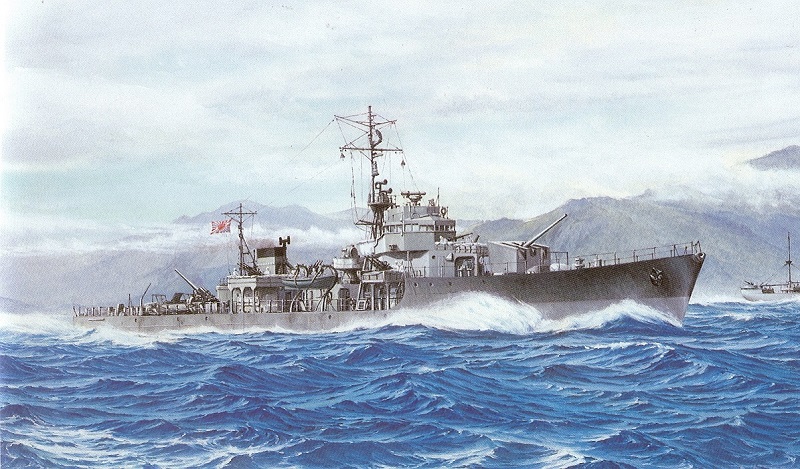© 2009-2016 Bob Hackett and Peter Cundall
Revision 2
12 October 1944:
Harima. Laid down at Harima Ship Building, Ltd.
26 December 1944:
Launched and numbered CD-154.
15 January 1945:
Reserve Lt Kumabe Itsuo (former CO of auxiliary minesweeper ASAHI MARU NO. 2) is appointed Chief Equipping Officer.
7 February 1945:
CD-154 is commissioned and registered in the IJN. Attached to Kure Naval District. Lt Kumabe is the Commanding Officer.
23 March 1945:
Assigned to the General Escort Fleet's First Escort Fleet. At Saiki.
26 March 1945:
Departs Saiki and at 1336 arrives at Kure. Undergoes repairs.
10 April 1945:
Reassigned to the Seventh Fleet.
30 June 1945:
1.7 miles off Hesaki light. CD-154 is damaged by a mine.
15 August 1945:
Japan accepts the Allies “Potsdam Declaration” (of unconditional surrender) and hostilities cease.
5 October 1945:
Removed from the Navy List.
1 December 1945:
Assigned to the Allied Occupation Force. Serves as a minesweeper. [1]
10 September 1947:
Innoshima. Ceded to the United Kingdom. Later scrapped by Takuma.
Authors' Note:
[1] In 1945, the U.S. Army Air Force launched a five-phased campaign known as “Operation Starvation” to mine Japan’s home waters. The USAAF used 80 to 100 B-29 “Super Fortress” heavy bombers of the 21st Bomber Command based at Tinian in the Marianas. The B-29s could carry seven 2,000 lb. or twelve 1,000 lb. mines.
Beginning on 27 March 1945 and continuing until 5 August 1945, the B-29s flew 1,529 nighttime radar sorties and laid 4,900 magnetic, 3,500 acoustic, 2,900 pressure and 700 low-frequency mines for a total of more than 12,000 mines laid in Japanese waters. These mines sank 294 ships, damaged 137 beyond repair and damaged another 239 that could be repaired. The total was 1, 250,000 tons sunk or damaged or about 75 percent of Japanese shipping available in March 1945. Only 15 B-29s were lost during the mining campaign.
Postwar, removal of these mines posed a major challenge for the Allied Occupation Forces. They pressed 269 Japanese ships of various types into mine sweeping service to augment their own efforts.
Thanks to Mr Gilbert Casse of France and Mr. Matt Jones of Ohio, USA.
-Bob Hackett and Peter Cundall
Back to
Escort Page



